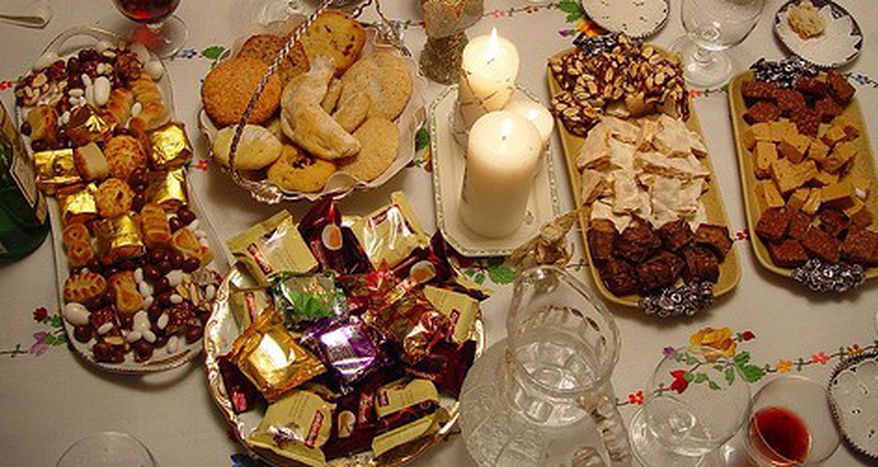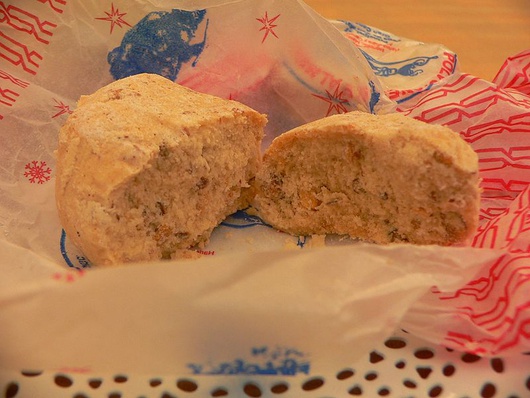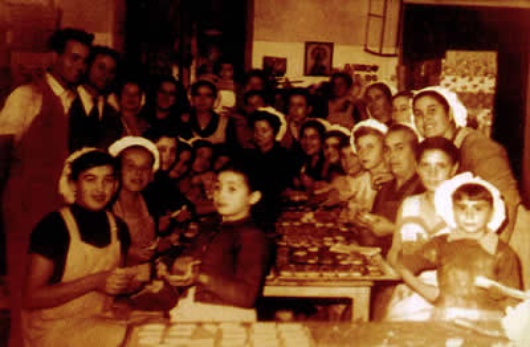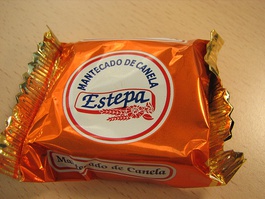
Spanish mantecado: sweet treat beats economic downturn
Published on
Translation by:
Susannah Readett-BayleyLard, sugar and cinnamon- when the crumbly biscuit appears on Spanish dining tables, there’s no doubt that Christmas is coming. Factories producing the biscuit that reigns at fiestas in Estepa near Seville run at full speed. Plus a cinnamon mantecado recipe
 A biscuit made of lard, flour, almonds and sugar is resisting the consequences of the crisis. José Luis Olmedo, director of the mantecado factory La Muralla in the city of Estepa, near Seville explains why: ‘Mantecado is a bargain.’ One kilo, or about 30 biscuits, costs between four and five euros (£3.77 - £4.72). ‘More than enough to fill a plate for a family and their guests,’ says Olmedo. This gives the Sevillan buns an edge over many typical Christmas specialities. The mantecado is so popular that there is an export demand from the ‘colonies’ of Spanish immigrants living in the rest of Europe, especially in France, Italy and in Portugal.
A biscuit made of lard, flour, almonds and sugar is resisting the consequences of the crisis. José Luis Olmedo, director of the mantecado factory La Muralla in the city of Estepa, near Seville explains why: ‘Mantecado is a bargain.’ One kilo, or about 30 biscuits, costs between four and five euros (£3.77 - £4.72). ‘More than enough to fill a plate for a family and their guests,’ says Olmedo. This gives the Sevillan buns an edge over many typical Christmas specialities. The mantecado is so popular that there is an export demand from the ‘colonies’ of Spanish immigrants living in the rest of Europe, especially in France, Italy and in Portugal.
But no small traders are spared by the crisis. Even the mantecado’s final price has risen by 15%. The traditional base is composed of 50% wheat flour, 25% lard and 25% sugar. An extra ingredient provides the different flavours (lemon, cinnamon, almond, coconut..) Considering the seriously inflated price of lard during the last year, ‘It’s not surprising that the final price has risen too,’ states Olmedo. One of the direct consequences is a significant reduction in the demand for small boxes of mantecados, usually an imperative in company Christmas hampers.
Tradition, the best marketing campaign
 ‘Tradition’ is without doubt the best marketing campaign, believes Olmedo. The mantecado dates back to the sixteenth century. Antequera and Estepa, two towns in central Andalucia, both claim it originated there. Surplus supplies of lard and flour led villagers to dream up a product that would turn them into profit. However, it was only marketed commercially in 1870. Its success was instant: in 1934, some fifteen houses in Estepa had already been transformed into small businesses. Today, the number has doubled to thirty.
‘Tradition’ is without doubt the best marketing campaign, believes Olmedo. The mantecado dates back to the sixteenth century. Antequera and Estepa, two towns in central Andalucia, both claim it originated there. Surplus supplies of lard and flour led villagers to dream up a product that would turn them into profit. However, it was only marketed commercially in 1870. Its success was instant: in 1934, some fifteen houses in Estepa had already been transformed into small businesses. Today, the number has doubled to thirty.
Estepa is without doubt the world capital of mantecado. Its annual production is 20 million kilos, or 40% of the national production. Located in the region of Seville, this town of no more than 12, 000 inhabitants produces ‘mantecados at a frenetic pace’ during four months of the year (August to December), a workload that ‘more than merits its eight months of holiday,’ confirms Olmedo. 2, 000 people work in mantecado manufacturing, whilst most of the rest of the population are involved indirectly. Marketing, equipment, transport and distribution are 100% Estepa-based and contribute to its wealth.
High-speed mantecados
Although the sweet is manufactured in many other parts of Spain and Andalusia, the mantecado regulatory council in Estepa ensures that the origin is accurately indicated on each product. One of the most efficient strategies for distributing the mantecado is on the Seville-Madrid TGV (high-speed train) where it is available in small quantities, around 20 grams. This distribution began in 2006 and has strengthened Estepa’s first place even further. Despite all these developments, Olmedo concludes: ‘The mantecado wrapped in white cellophane is the true mantecado.’
Recipe for cinnamon mantecado (for 900 grams)
Ingredients:
 175 grams of white lard
250 grams of sugar
125 grams of powdered grilled almonds
350 gram of flour
5 grams of cinnamon
175 grams of white lard
250 grams of sugar
125 grams of powdered grilled almonds
350 gram of flour
5 grams of cinnamon
Place the flour in a pan and cook over a gentle heat stirring constantly with a wooden spoon
Once it is cooked, mix in the almonds and leave to cool
Next, beat the lard until it turns frothy and add sugar and cinnamon
Stir again adding the flour and the almonds little by little
Roll out the dough (two centimetres thick) and cut into 4 centimetre-wide pieces
Place in preheated oven at 150 degrees
Once cooked, leave to cool and wrap in the paper for presentation
Translated from En tiempos de crisis el mantecado hace su agosto



